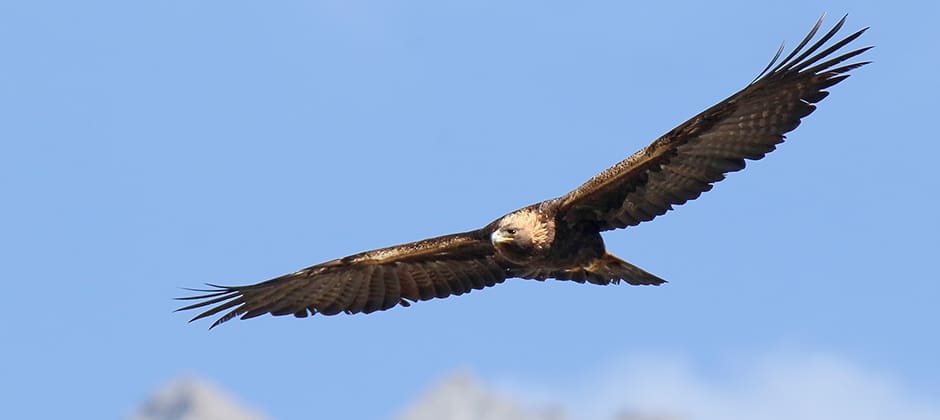Share this article
Scotland eagles face different wind turbine threats than in the U.S.
In 2017, the Scottish government became concerned when a lot of tagged golden eagles were disappearing or dying. People involved in the sport of grouse shooting claimed it wasn’t their doing—it was due to wind farms, and they pointed to the mortalities of eagles at wind farms in the United States. An initial look at Scottish wind farms, however, showed researchers at Natural Research, an independent charity that specializes in encouraging and conducting raptor research, no evidence of eagles’ deaths near the turbines. In fact, they found, golden eagles (Aquila chrysaetos) weren’t going anywhere near them, and that the sport of grouse shooting was primarily associated with the disappearances of tagged birds and their deaths.
“That was the first step to our looking in more detail at wind farms here, because the heavy losses were being claimed by some to be due to wind farms. Our research has shown that this is absolutely not the case,” said Phil Whitfield, the managing director of Natural Research.
But Whitfield and colleagues became intrigued by the fact that the eagles were staying far away from the turbines. They wondered if the wind farms were displacing the eagles from the area altogether.
In an initial study published in Ibis, led by Natural Research’s Alan Fielding, biologists looked at wind farms going back to 1997, when turbines had much smaller blades and less technological advancements than today’s. They looked at differences between the old and new turbines, and they studied how 59 GPS-tagged golden eagles reacted to turbine operations at 80 wind farms across Scotland. They discovered that for the most part, the eagles avoided the turbines, but sometimes they would take the risk of potential collision with rotating blades if the farms offered highly preferred habitat.
In another paper in PLOS One, the team looked more specifically at two wind farms that they had much more data for, spanning the time before and after the turbines became operational. “We knew exactly when every single particular turbine became operational and also had particular information on wind speed at turbines and when they shut down,” Whitfield said.
The team found again that generally, golden eagles stayed away from the turbines. When wind turbines weren’t in preferred habitat or in the interior of wind farms, the eagles avoided them completely. But when there were higher wind speeds and the turbines were surrounded by preferred habitat, eagles were less wary of turbines.
The situation is far less dire than in the United States, where wind turbines are often deadly for the same species. Whitfield speculates that in Scotland, birds’ fear of turbines may be greater than in the U.S., because there’s more persecution of golden eagles in Scotland.
“There’s clearly a difference,” he said. “Avoiding humans and their representation in the landscape could have provided selective pressure for eagles to be more wary in Scotland. The less wary didn’t survive as long and so contributed less to the next generation.”
Header Image: Golden eagles respond differently to wind turbines in two different regions. Credit: Imran Shah








